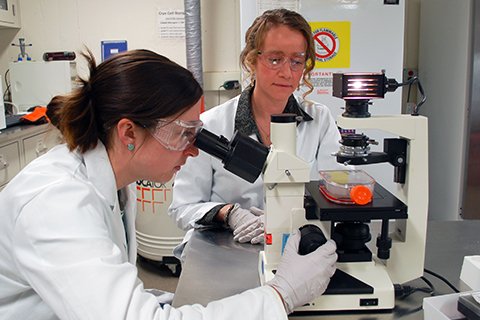University partnership with Dow results in major discovery to improve oral medications

The University of Minnesota and Dow have filed a patent on the discovery
A five-year partnership between the University of Minnesota and The Dow Chemical Company has resulted in a discovery that could allow life-saving oral medications to work faster and more efficiently.The researchers devised a new method for customizing ingredients that help the oral medications dissolve in the body and be absorbed into the bloodstream. The University of Minnesota and Dow have filed a patent on the discovery that may also lower the cost to produce new medications. The research was published in the leading chemical sciences journal ACS Central Science.
One of the biggest challenges for pharmaceutical companies when developing oral medications is to ensure that the body will fully absorb the drug molecules. Many therapeutic structures do not easily dissolve on the molecular level, which means they are less effective. In that case, the dose must be increased for patients, which may increase side effects.
“A way to explain the differences in solubility of medicines is to think of how sugar easily dissolves in water and is rapidly absorbed by your digestive system, whereas sand doesn’t dissolve in water and if swallowed, would pass right through the digestive system,” said Theresa Reineke, a Lloyd H. Reyerson Professor in the University of Minnesota’s Department of Chemistry and lead researcher on the study.
Revolutionizing how oral medications are made
Drug companies add substances, called excipients, to help medicines dissolve in the stomach and intestinal fluid, but there have been few improvements in recent years to this decades-old technology. The process outlined in the study is a major breakthrough that revolutionizes the process of making drug structures more soluble in the body so that they are better absorbed.
“The partnership with Dow was critical to this discovery,” Reineke said.
Graduate student researchers spent three weeks working at Dow using the company’s automated polymer synthesis and high throughput characterization equipment, which allowed rapid identification of the top-performing drug-excipient formulations. Upon their return to the University, the students then scaled up the lead formulations and were able to use equipment in the University’s Characterization Facility to characterize the mechanisms of action.
“This unique academic-industry team environment has emphasized cutting-edge fundamental research, which in turn has facilitated rapid innovations to applied product development that may directly aid human health,” Reineke added.
In the study funded by Dow, researchers examined two medications—phenytoin, an anti-seizure drug, and nilutamide, a drug used to treat advanced-stage prostate cancer. One particular excipient discovered by this research allowed these insoluble drugs to fully dissolve in simulated intestinal fluid in a test tube. When they tested phenytoin with the new excipient in rat models, it promoted drug absorption three times better than the previous formulation.
Discovery is just the beginning
“While we were pleased with the results with these specific drugs, the most important thing is that we have developed a high throughput methodology for excipient development that could be used by many companies to create other life-saving medicines,” Reineke said.
“It takes about $1 billion dollars and 10 to 15 years for a pharmaceutical company to develop a new drug, but then they sometimes find marketable formulations are limited by solubility,” said Steven Guillaudeu, a lead R&D manager at Dow and co-author of the study. “The methodology our team has created could help drug companies advance their pipeline compounds by using a better method to improve solubility and therefore bioavailability. The approach could have a major impact on the multibillion-dollar industry.”
The research discovery is one result of a five-year collaboration between Dow and the University of Minnesota for research partnerships to develop new chemical solutions, improve research facilities, and train the next generation of scientists.
“This discovery is a perfect example of what can happen when industry and academia come together,” said Frank Bates, a Regents Professor in the University’s Department of Chemical Engineering and Materials Science and co-author of the study.
“This research has yielded something that could have a huge effect on human health and lower the cost of medications,” Bates added.
In addition to Reineke, Guillaudeu, and Bates, other researchers who were part of the team included current and former University of Minnesota students and post doctoral researchers Jeffrey Ting (lead author), Swapnil Tale, Anatolii A. Purchel (Gleysteen Fellowship, Excellence in Grad Student Award recipient), Seamus D. Jones (Charles and Dorothy Andrew Bird Sigma Xi Award and President's Scholarship Award recipient), Lakmini Widanapathirana, Zachary P. Tolstyka, and former Dow researcher Li Guo.
